Coelogyne cristata Lindley var. alba L. Linden & E. Rodigas
The Royal Horticultural Society is the UK's leading gardening charity. We aim to enrich everyone's life through plants, and make the UK a greener and more beautiful place.

Crossed one off my wish list last month and now she's blooming
The species of Coelogyne are popular in collections due to their mostly fragrant, free flowering, showy inflorescences. Those most often found include C. cristata, C. speciosa, C. fimbriata, C. massangeana and C. dayana. Barbara Gravendeel of the University of Leiden, Netherlands published a reorganization of Coelogyne in 2000. She reports.

Coelogyne cristata alba Red Orchids, Wild Orchid, Orchid Plants
Coelogyne cristata alba Discussion in 'Orchid Species' started by piotrm, Mar 21, 2017. Mar 21, 2017 #1. piotrm Well-Known Member. Messages: 2,503 Likes Received: 327. Location: Grimsby UK. I am guessing the most common Coelogyne in the cultivation, but is always nice after winter to have such a big flowers around - here the white form.

Coelogyne cristata alba form Orchids, Beautiful flowers, Pretty flowers
Coelogyne cristata has the largest flowers in the Coelogyne genus. It is a white orchid with yellow "fuzz" inside the flower's lip. They are fragrant. Their native habitat is at high elevations along the edges of the Himalayas, mostly in India. They get significant seasonal variation in the climate due to monsoons; they bloom in the winter when.

Coelogyne cristata alba flowers flower TagsForLikes petal petals
Coelogyne cristata Care Details. Soil/Growing Medium. Use a commercial orchid potting mix that drains freely. An orchid basket is an ideal container. Fertilizer. Use a liquid orchid fertilizer every 2 - 3 weeks when the plant is growing and flowering. Hold back of fertilizer during dormancy. Light. Good indirect light of filtered light is.
Amo Orquideas Coelogyne cristata alba
The Coelogyne orchid genus gets a lot less attention than it deserves. The plants have beautiful, fragrant flowers, can tolerate drought and neglect, and rapidly develop into massive, impressive specimens.. The largest-flowered species in the genus, Coel. cristata, is one of these cool-growing types. To grow them well, it's important to.
Coelogyne cristata Lindley var. alba L. Linden & E. Rodigas
Coelogyne cristata would definitely be the most popular and most widely grown of all the Coelogynes. The large (8cm +) wavy, pristine white, long lasting and sometimes fragrant flowers, with their beautiful clear yellow gold markings, are an instant hit with orchid growers and the general public.. The 'Alba' varieties tend to be more.
GALLERANI ORQUÍDEAS Coelogyne cristata var. ochroleuca ( alba )
All photographed this week we have Coelogyne cristata 'limoniana' with very pale yellow on the lip, the more usual variety with golden yellow on the lip and "alba' with pure white flowers. As well as a range of flower colour forms, clones are also variable in leaf colour, distance between bulbs, size of flowers and texture of flowers - all good reasons to grow lots of Coelogyne.
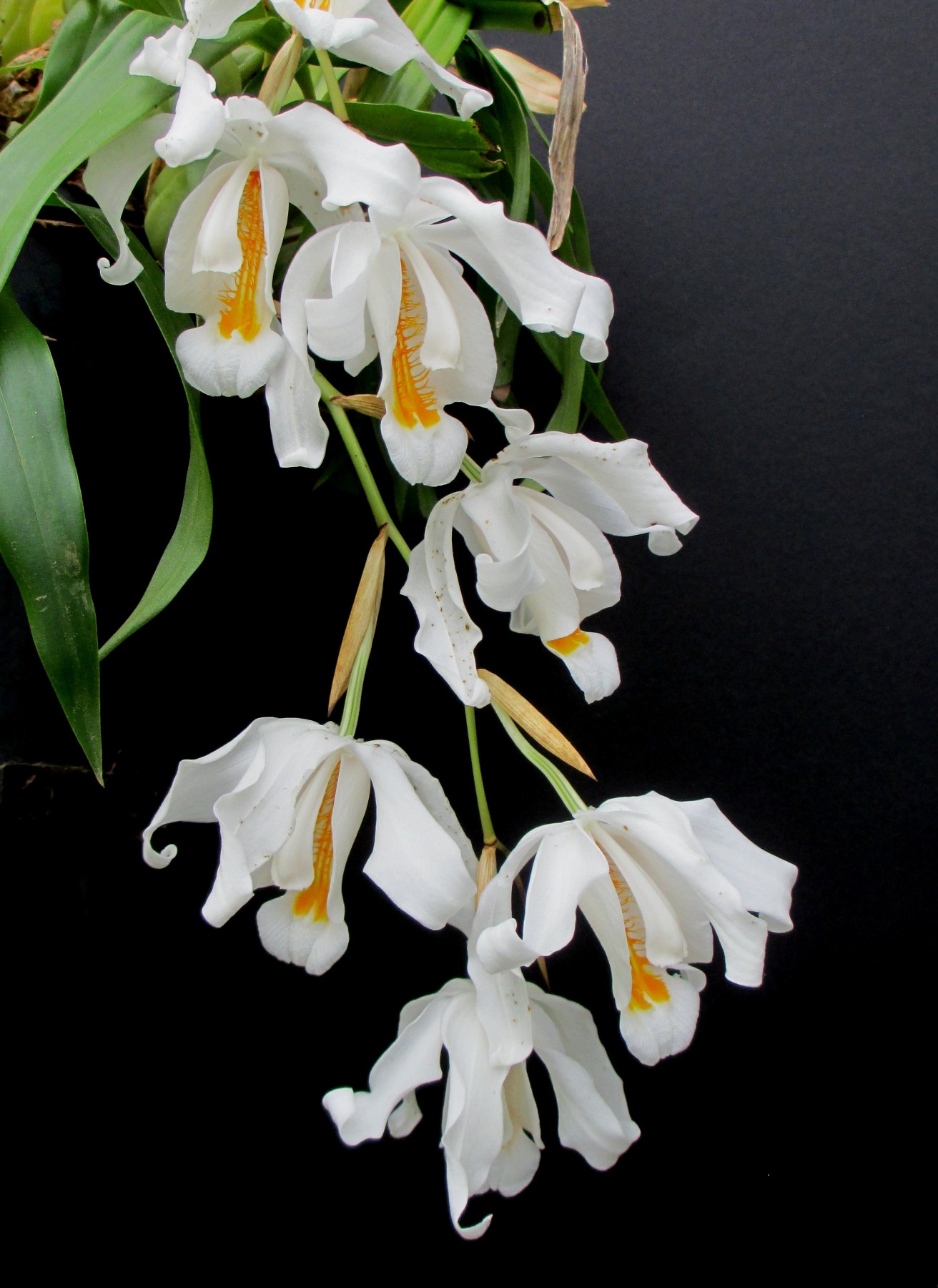
Coelogyne cristata Southern Suburbs Orchid Society Inc.
The Crested Coelogyne needs the humidity of almost 85% in summer and early spring, falling to 60-70% at the beginning of winter. Substrate, growing media: Coelogyne cristata grow well attached to pieces of tree fern or cork, but during the hot and clear summer days it requires high humidity and several waterings during the day.
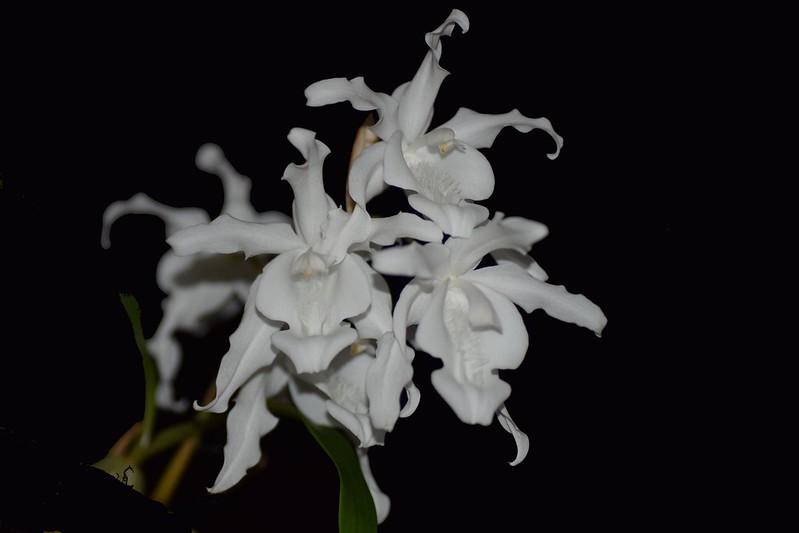
Coelogyne cristata var alba Orchids Carnivorous Plants UK
Coelogyne cristata is commonly found growing fully exposed to the sun on both trees and rocks in moss-forests. Temperature. Coelogyne cristata is a cool growing orchid. The recommended temperature for winter days is 11-13°C (51-55°F), and it is normal for the orchid to experience a temperature around 2-4°C (36-39°F) during winter nights.
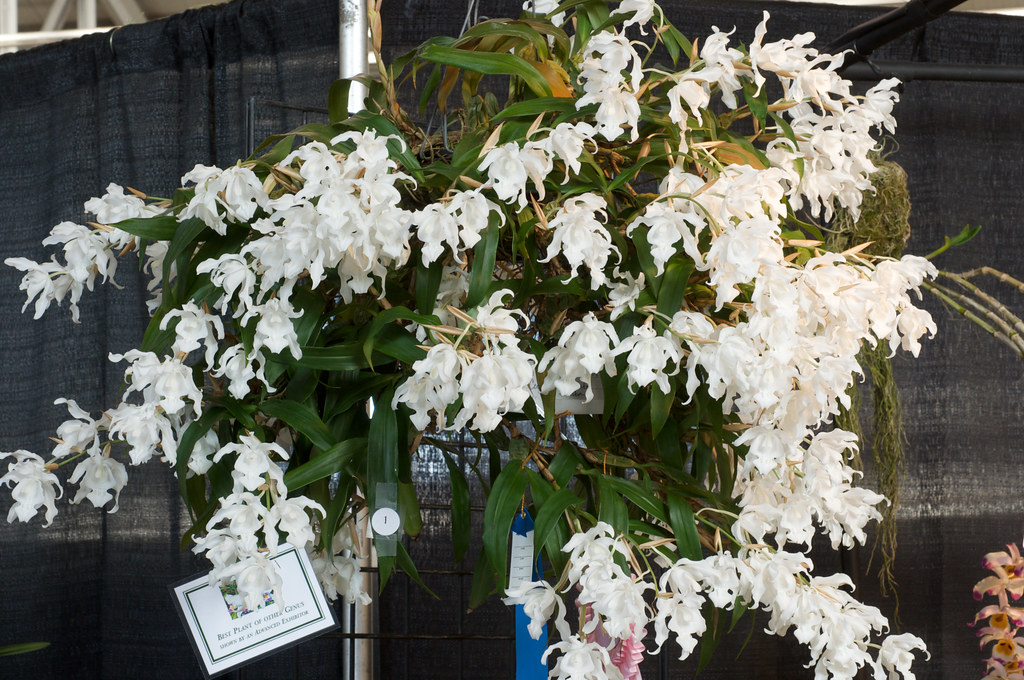
Coelogyne cristata v. alba Species from the Himalayas Grow… Flickr
Coelogyne Cristata Varieties. Coelogyne cristata var. alba is an all-white variety of the species; C.r. 'Glacier Mint' is a popular cultivar that blooms profusely in early spring; Coelogyne Orchid Care Tips. Origin: Himalayan Region of India and Asia. Height: 12 in (30 cm) Light: Bright indirect light year-round.

Coelogyne cristata alba Southern Suburbs Orchid Society Inc.
Coelogyne cristata is also reported in the mountains of northern Thailand. The habitat is usually at 5,250-8530 feet (1,600-2,600 meter) in moss forests where plants are found on both trees and rocks, often almost fully exposed to the sun. Cultural Recommendations: Light

WSBEorchids The Home of the Writhlington Orchid Project
Coelogyne Cristata, also called the Angel orchid, is an orchid from the Himalayas that is sought all over the world for its large, full bloom and fresh foliage.. In this guide, you get to learn how to grow them easily by yourself. Taking only a little time and effort out of your busy schedule, you will surely get to experience its beautiful flowers right in your own home when you follow this.
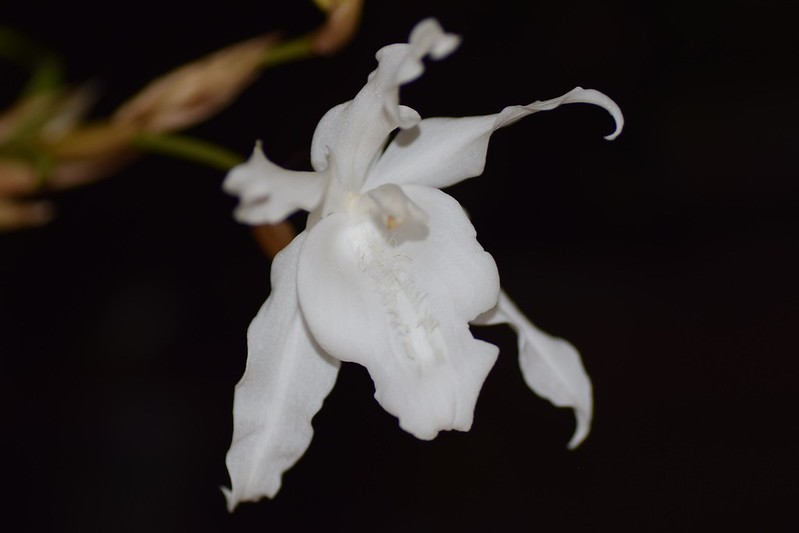
Coelogyne cristata var alba Orchids Carnivorous Plants UK
Coelogyne cristata Lindl.(1824) is a species of the family Orchidaceae, subfamily Epidendroideae, tribe Arethuseae, subtribe Coelogyninae, endemic to South-East Asia.. In particular, it has been found in Assam (India), in Bangladesh, in western and eastern Himalaya, in Bhutan, in Nepal and in Tibet.
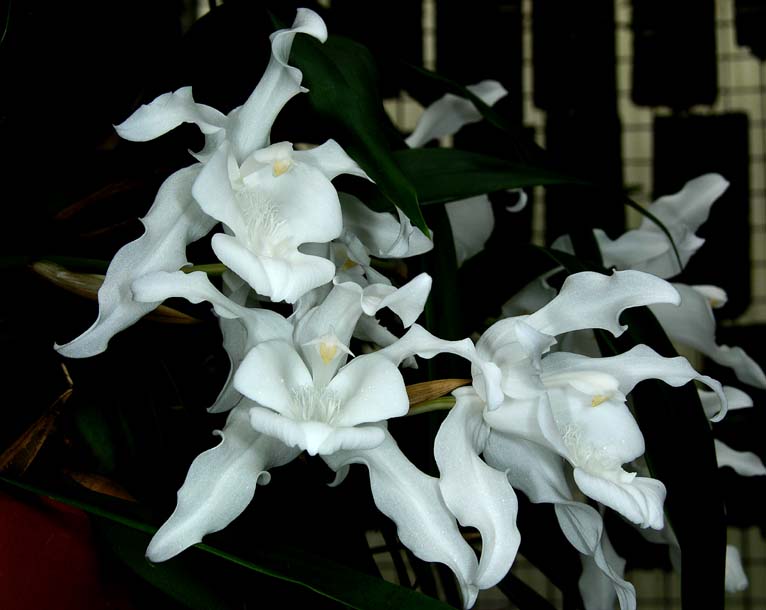
coelogyne cristata alba
365 days of orchids - day 445 - Coelogyne cristata. Simon Pugh-Jones; March 22, 2018; 2 Comments on 365 days of orchids - day 445 - Coelogyne cristata; General News; Our enormous specimen of Coelogyne cristata 'alba' Tinkitam (the third photo shows it in the greenhouse and arrived at the show below) has attracted a lot of attention here in Paris and was photographed yesterday.
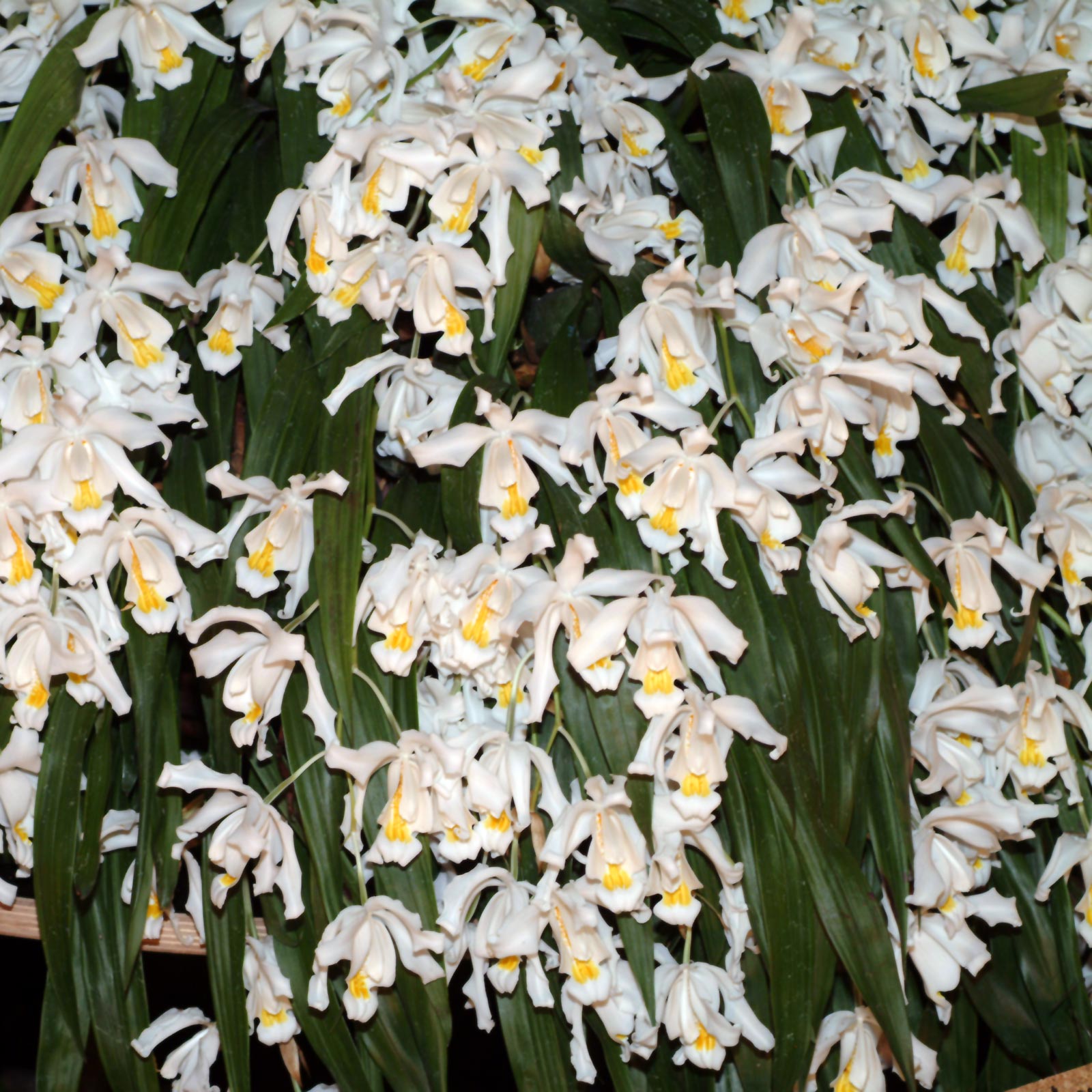
Coelogyne cristata Großräschener Orchideen
Coelogyne ( pronounced " see-LODGE-in-ee) is a species of wide ranging epiphyte that can be found from India and Chine to Indonesia and the Himalayas. They can be found in tropical lowland forests and in cooler mountain rainforests. They like temperatures of 16 o C to 24 o C degrees. They need a cooler winter to help with reflowering - 7 o.